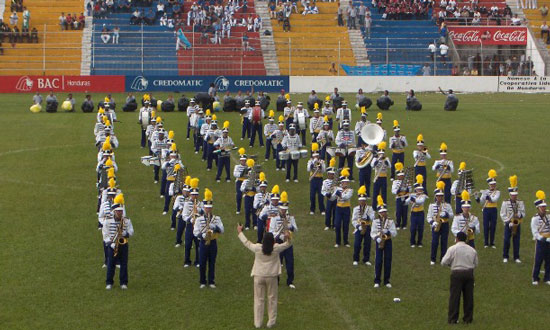21 Nov Central Conference Moves to Dissolve
The conference council of Central Conference met Saturday, November 18, to sign the papers to officially dissolve the conference effective January 1, 2007. The annual conference voted in July 2005 to disband, but couldn’t do so until the conference was dismissed from a lawsuit. The conference council was authorized to take care of any business in the meantime.
In September, the conference was dismissed from that lawsuit (which involves the Good Shepherd UB church in Greenfield, Ohio), and Superintendent Tom Brodbeck quickly took the steps needed to dissolve.
Several items of business needed to be handled by the conference council:
- Legal papers were signed to make Camp Cotubic (Bellefontaine, Ohio) an independent entity (as has been done with the former Mid-Atlantic Conference and Michigan Conference camps). There will be two separate corporations: one to be a holding company for the property, the other to handle operations.
- The Center for Church Planting in Central Ohio (CCPCO) will continue to function. The title to the property at Kettering, Ohio, once a UB church, was transferred to the CCPCO. Another church has been meeting there since 1985, having purchased the property for $256,000. They still owe $120,000, and pay $2000 a month. Payments will now go to the CCPCO.
- The Harwood Loan Fund, which has provided ministerial scholarships since the 1960s, will be used to establish a $10,000 scholarship at Huntington University. Superintendent Brodbeck will take care of setting this up.
- The council distributed other cash assets, including $3000 to Laurel Mission, $7000 to Camp Cotubic, and $2500 to Scioto Youth Camp.

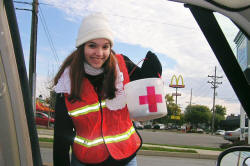 On October 21, Huntington University students plunged into the community for the annual Fall Work Day, a tradition since 1996. Volunteers divide into groups, usually by dormitory floors, and are assigned a location and project.
On October 21, Huntington University students plunged into the community for the annual Fall Work Day, a tradition since 1996. Volunteers divide into groups, usually by dormitory floors, and are assigned a location and project.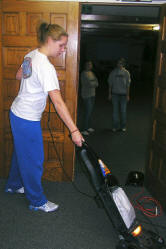 Fall Work Day has averaged about 425 volunteer hours a year. This year’s 222 volunteers, up from 186 in 2005, gave 777 hours of community service. One group went to Huntington’s Head Start to help with yard work–pulling weeds and raking leaves. Another group went to the YMCA to assist with organizing and cleaning rooms. Nichole Wolf (right), a freshman educational ministries major, took donations for the Boot Shake, a Red Cross fundraiser. Maggie McWilliams (left), a freshman elementary education major from Franklin, Ind., helped with cleaning at Good Shepherd UB church.
Fall Work Day has averaged about 425 volunteer hours a year. This year’s 222 volunteers, up from 186 in 2005, gave 777 hours of community service. One group went to Huntington’s Head Start to help with yard work–pulling weeds and raking leaves. Another group went to the YMCA to assist with organizing and cleaning rooms. Nichole Wolf (right), a freshman educational ministries major, took donations for the Boot Shake, a Red Cross fundraiser. Maggie McWilliams (left), a freshman elementary education major from Franklin, Ind., helped with cleaning at Good Shepherd UB church.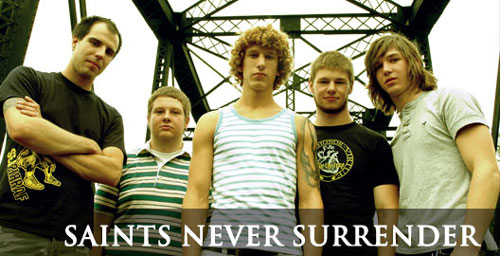
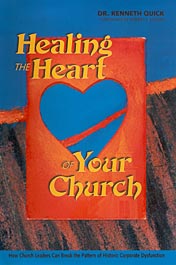 In the last post I mentioned the idea of a corporate time of prayer and confession for sins of the past in our church. Well, I was directed to a great resource, a book by Dr. Kenneth Quick titled, Healing the Heart of Your Church. Some of you might be interested in reading it for the insights it could provide for your local church situation. The publisher is Church Smart. You could order it direct from them or you could order it from our bookstore here. It is worth the read and will give you some insights as to why I possibly began to think about such a time at the National Conference 2007.
In the last post I mentioned the idea of a corporate time of prayer and confession for sins of the past in our church. Well, I was directed to a great resource, a book by Dr. Kenneth Quick titled, Healing the Heart of Your Church. Some of you might be interested in reading it for the insights it could provide for your local church situation. The publisher is Church Smart. You could order it direct from them or you could order it from our bookstore here. It is worth the read and will give you some insights as to why I possibly began to think about such a time at the National Conference 2007.